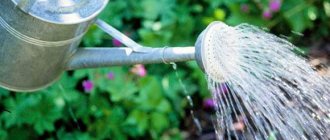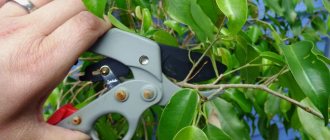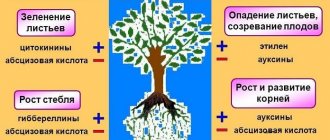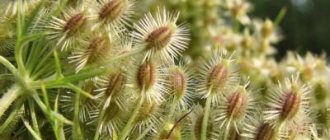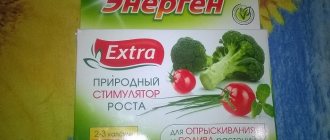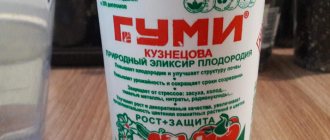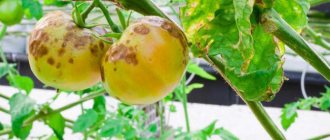Types of stimulants
Phytohormones (plant hormones) take an active part in all biological processes and at all levels of development - from seed germination to fruiting and leaf fall, help plants adapt to environmental influences and fight diseases.
Therefore, plants respond positively to receiving additional amounts of phytohormones from the outside. You just need to decide which hormone or group of hormones the plant needs at the moment.
Different groups of hormones are responsible for the course of various processes in plant organisms:
- auxins – promote the development and growth of roots, cambium, young shoots, supplying the entire plant with necessary substances;
- gibberellins - ensure seed germination, “awakening” of bulbs and tubers, the formation of flowers and ovaries, as well as the accumulation of useful components (but not distribution);
- cytokinins – regulate the processes of cell division, are responsible for the development of buds and aging of leaves, and are stimulators of the growth of young shoots;
- brassins or brassinosteroids - are responsible for the processes of ripening of seeds and fruits, the functioning of the immune system.
To artificially stimulate and regulate the growth and development of plants, modern industry produces a wide range of organic and synthetic hormones, which are substitutes for natural ones. Synthetic phytohormones are the most effective growth stimulants.
General information
Growth stimulants are a group of organic substances that affect the growth and development of plants. They increase the resistance of plants to stress, various diseases, and the effects of adverse factors. Growth stimulants have a beneficial effect on the plant, accelerate the onset of flowering, rejuvenate old crops, and improve the quality of fruits.
Regulators and growth stimulants, when used correctly, help the plant to develop better and fight against adverse environmental factors
Many growth regulators belong to phytohormones - substances that are produced by plants and regulate their growth and development.
Growth regulators include the following substances;
- - auxins
- - gibberellins
- - cytokinins
- - brassins (brassinosteroids)
- — humates
- — preparations based on effective microorganisms (EM-preparations).
Let's figure out what each of these substances is.
Auxins
Auxins are general growth phytohormones. Even their name is translated from Greek as “growing.” These hormones are primarily responsible for cell elongation, which is what causes plant growth. The action of auxins is not specific; they affect the growth of all parts and organs. These phytohormones are also responsible for phototropism (i.e., the movement of plants following sunlight).
Gibberellins
Gibberellins are another group of phytohormones; they can also be called “youth hormones”. Unlike auxins, gibberellins accumulate mainly in fast-growing parts of the plant: young leaves, ripening fruits and seeds, and new seedlings. These phytohormones stimulate the growth of shoots and leaves, bring seeds out of hibernation, and also accelerate the growth of seedlings.
Cytokinins
Cytokinins are representatives of phytohormones that regulate cell growth. They affect shoot and root growth, accelerate cell division, chloroplast maturation and bud formation. Cytokinins act together with other phytohormones - auxins , but in relation to different processes their actions are not the same. For example, in the processes of cell growth and division, these phytohormones work together, enhancing each other’s effects. And if shoots develop, they are antagonists, that is, they counteract each other. Cytokinins cause the development of side shoots, while auxins, on the contrary, stimulate the development of only one main shoot.
Brassins (brassinosteroids)
The action of brassinosteroids is similar to that of auxins. They also increase the stretching of cells, due to which growth occurs. Therefore, these two groups of phytohormones are sometimes used together, since when paired they give a greater effect.
But brassinosteroids and auxins have equally opposite effects on the growth of plant roots : while auxins stimulate the growth of the root system, brassinosteroids, on the contrary, suppress this growth.
And in large doses, brassins generally act as growth inhibitors (therefore they must be used with caution).
This phytohormone also protects plants from unfavorable environmental factors, such as frost, drought, viruses and bacteria, the effects of pesticides and others. They increase the viability of pollen, and in some plants they can slow down the aging of foliage.
Preparations based on effective microorganisms (EM-preparations)
Recently, with the development of technology, preparations based on effective microorganisms (also called EM preparations ) have increasingly begun to be used in gardening.
They are produced on an industrial scale and contain beneficial microorganisms. These are mainly photosynthetic and lactic acid bacteria, as well as yeast and fermentative fungi.
Such EM preparations promote humus formation processes and improve soil properties.
Bacteria convert salts from the soil into an easily digestible form for plants, they inhibit the growth of pathogenic microflora and neutralize heavy metal salts. In general, these products have a beneficial effect on the growth and development of plants, increase their productivity and make it possible to achieve high quality fruits.
A small diagram that will help you understand and remember what each group of substances is needed for
Auxins – root growth stimulators
Auxins are hormonal substances that promote cell elongation in plant tissues of stems and roots (growth hormone). This ability of the hormone is indispensable for the germination of seedlings. The most well-known auxin-based drugs are:
- Heteroauxin
Synthetic stimulator of root system formation, growth hormone. Enhances root growth, activates the growth of a developed root system of cuttings, seedlings, seedlings of vegetables and flowers, stimulates the germination of tubers and bulbous crops.
The drug increases yield, as well as the quality and quantity of seeds in fruits. The roots of seedlings, seedlings, and cuttings are treated by immersion in the solution for 20 hours , and when planting, they are watered with the remainder of the solution. To prepare it, 2 tablets are dissolved in 10 liters of water .
- Zircon
Stimulates the development of the root apparatus of seedlings, promotes their rooting, and activates the formation of roots during seed germination. The product helps seedlings adapt more easily when transplanted from a greenhouse to open ground.
It helps young tree seedlings survive even in difficult climatic conditions and strengthens immunity to diseases such as late blight, bacteriosis, and fusarium.
- Kornevin
The drug accelerates the root formation process and is available in convenient packaging of 5 g in powder form. Can be used dry - crush cuttings before planting. An aqueous solution (5 g/5 l) is used to water the seedlings after planting in the soil.
Folk remedies for rapid plant growth
If planting is done during an unfavorable weather period, then it is necessary to use stimulants, which you can prepare with your own hands. In addition, they will help the cutting recover if it was taken from a weak and diseased plant. There are quite a lot of recipes, let’s look at the most popular ones.
Willow water
This is the most ancient recipe for a folk stimulant. It will help in rooting even the most “stunted” seedlings.
To prepare, you need to put the willow twigs in water and wait for the roots to appear. The twigs are now unusable and should be thrown away. And the folk remedy is ready. The preparation process will take fourteen days. To make willow water, you should take only young branches that reach a diameter of no more than six millimeters. After cutting, the cuttings must be treated with alcohol - this will prevent harmful microorganisms from developing in the water. It is good to water young seedlings with this water - they will develop immunity to various diseases.
Honey
This is also a good stimulator of plant root formation, which you can prepare yourself. To do this, dilute one teaspoon of honey in one and a half liters of warm water. The cutting should be immersed in the solution for twelve hours - this way the plant will strengthen its immunity and receive the minerals necessary for growth.
Honey solution has long been used as an effective growth stimulant.
Potato
This is one of the simplest, most accessible and at the same time effective folk remedies for stimulating the growth of cuttings. Using it is more than simple - just cut out all the “eyes” from the potato, insert a cutting into it and dig it into the ground. After this, the seedling needs to be covered with film or a jar to create a greenhouse.
In addition, potatoes can be used as a preservative - just stick a stalk into the tuber, wrap it all in film and put it in the refrigerator. In this condition, the workpiece can be stored until spring.
Aloe juice
This is the simplest plant growth stimulator at home. This product accelerates the formation of a strong root system in the plant, improves growth and strengthens the immune system.
It is very simple to prepare the substance for processing - cut off a couple of old leaves, wash them well, and grind them to a paste. Strain the mixture through cheesecloth, and use the resulting juice to prepare a solution: about 6 drops per glass of water.
Yeast
Conventional baker's yeast is the most effective stimulator of plant root growth, if we talk about folk remedies. It is very simple to prepare the “medicine” - you need to dissolve the yeast in water and leave the cuttings in the prepared liquid for a day, then transfer them to ordinary water and keep them there until roots form.
To prepare a plant stimulant, yeast is used both dry and fresh.
Gibberellins – flowering stimulants
Growth stimulants containing the hormone gibberellin activate seed germination processes, accelerate flowering, increase the number of ovaries, and abundant and uniform ripening of the crop.
Grapes, tomatoes, potatoes, and indoor orchids respond especially well to treatment with gibberellin preparations. The most common drugs based on this hormone:
- Epin
It is the most universal growth stimulator. It helps accelerate various vegetative processes and is available in various versions: Extra, Bud Ovary. From the names it is clear what exactly this or that drug is intended for.
They improve seed germination, help plants overcome stress when transplanted into open ground, and increase immunity to diseases. Epin is especially effective for cucumbers, tomatoes, peppers - it helps to increase the number of ovaries and accelerate the ripening of fruits.
- Gibbersib for the ovary
It is able to increase the number of ovaries and accelerate the ripening of flowers; even under poor climatic conditions, crop yields increase significantly. The product is used to treat crops before buds appear to increase the number of ovaries.
- Bud
It has a positive effect on the number of ovaries, prevents the appearance of barren flowers, increases the quantity and quality of the harvest, and the content of vitamins in the fruits. The drug is used to treat the ovaries of flowers just before flowering begins.
The importance of plant growth stimulants, the need for their use
In industrial crop production today it is impossible to do without drugs that ensure optimal processes of growth and development of crops. Plant growth stimulants are capable of triggering and regulating various physiological programs of plants.
Once in the plant, growth stimulants are included in the metabolic process. They affect the activity of biochemical processes and make the plant more viable, and its resistance to adverse environmental conditions increases. Photosynthesis, productivity and product quality increase. Seeds treated with growth stimulants before sowing have good germination and germinate better. Cuttings take root and take root in the soil faster, because under the influence of stimulating drugs, many secondary roots are intensively formed.
It has been experimentally established that under the influence of plant growth stimulants in grain crops, the number of grains in an ear and their weight increases, in sugar beets the sugar content increases by 0.1-1.2%, the yield of potato tubers increases significantly, moreover, the starch content in them the presentation increases and improves.
Cytokinins
This group of hormones stimulates cell division: is responsible for the formation of new buds, the growth of young shoots, activates the growth of lateral roots, slows down the aging process of leaves - in other words, prolongs the life and youth of plants. In gardening, cytokinin paste is used to increase the number of buds on fruit crops.
To do this, make a cut on the branch and put a small amount of paste into it using a toothpick. The drug must be used with great caution, since its overdose has the opposite effect - it inhibits plant growth and worsens the general condition.
In addition to the paste, the following preparations are used:
- Keikigrow Plus is a product similar to cytokinin paste, made in Canada, with the same direction and action.
- Cytodef is an additive to pesticides, promotes seed germination, active growth of young shoots, and improves fruiting of fruit trees.
Helpful tips when using growth stimulants
First, always follow the directions on the product package. This way you will not harm the plant, and the plant will develop faster. Moreover, by increasing the concentration of the drug you will get the opposite effect (instead of a stimulating one, a depressing one).
The use of several stimulants on the same crop must be justified.
Secondly, there must be a sufficient time interval between the use of stimulants so that the effect of one drug does not overlap with the effect of another.
Thirdly, know that stimulants cannot replace other growth factors - light, moisture, air, temperature, nutrition.
Therefore, the use of stimulants should always be justified and used as a last resort, when there is nothing to stimulate plant growth. A good stimulating effect for all plants is achieved by soil well fertilized with organic fertilizers. Almost all of them contain stimulants to one degree or another.
Brassinosteroids
Replanting plants, being affected by infections and other types of diseases, sudden temperature changes (freezing), accumulation of large quantities of harmful substances (pesticides, nitrates) - all these situations expose plants to stress and lead to a decrease in immunity.
To get out of stress and continue development, plants produce phytohormones - brassins. In addition, brassinosteroids are involved in the process of ripening of fruits and seeds. This hormone is found in different parts of the plant, but due to the deteriorating environment, its concentration is too low.
A popular drug, universal anti-stress adaptogen Epin Extra restores damaged plants, effectively protects against frost, and also:
- promotes seed germination;
- improves the formation of seedling roots;
- accelerates fruit ripening;
- helps increase productivity;
- increases resistance to weather changes;
- increases immunity to diseases;
- removes nitrates, pesticides, radioactive substances.
Multifunctional regulators
Today there are drugs on sale that not only regulate plant growth, but also have complex general strengthening properties. However, it is not always possible to accurately predict the response of plants to their use.
Zircon
In addition to root growth, this drug increases plant resistance to fungal diseases, prolongs the flowering period, increases productivity and helps to better tolerate unfavorable conditions (dry air, excess moisture, lack of lighting, high/low temperatures, etc.).
Mival, Mival-Agro, Energy-M
The preparations include silicon, which regulates respiration and accelerates the growth and development of plants. They are used to treat potato tubers; they are used to spray tomatoes, peppers and eggplants during the budding phase. This speeds up the ripening of fruits and increases the yield.
Furolan
This drug, created on the basis of biologically active substances of sunflower, increases the lignin content in plant tissues and increases their resistance to disease.
Ambiol
An immunomodulator, which is most often used for pre-soaking vegetable seeds. Ambiol solution increases the resistance of plants to frost, sudden changes in air temperature and lack of moisture, and also increases yield.
Krasnodar-1
This drug is used to accelerate the ripening of fruits and obtain an early harvest of tomatoes, peppers, eggplants, cucumbers and potatoes.
Amulet, Prorostok, El-1, Immunocytophyte
These regulators are based on arachidonic acid. Seeds, bulbs and tubers are soaked in their solutions, and the plants are also sprayed with them on the leaves. The drugs are used to increase plant resistance to diseases, accelerate the growth and development of green plants, and ripen fruits.
Carvitol
This drug contains acetylene alcohol, which has hormonal properties. It stimulates seed germination and plant development, increases productivity and improves the taste of fruits. Most often used for spraying tomatoes, peppers and eggplants.
Larixin
This immunomodulator is obtained from larch wood. Thanks to the active ingredient - dihydroquercetin, Larixin increases the immunity of plants and protects them from powdery mildew, septoria and root rot.
Krezacin
Biological product for stimulating seed germination, protecting plants from low and high temperatures, drought, lack of oxygen and vitamins. It is used for soaking seeds and spraying vegetable, fruit, flower and ornamental crops.
Albite
When released into the soil along with treated seeds, this drug promotes the proliferation of beneficial microorganisms and improves the absorption of nutrients by plants.
Narcissus
Thanks to the chitosan included in the composition (this substance is obtained from the shell of a crab), the drug activates the work of the root system and leaves, increases the resistance of plants to disease and stress.
Novosil, Biosil, Verva
These drugs contain triterpene acids. They are obtained from Siberian fir needles. The use of these regulators increases yield by 9-25%, accelerates fruit ripening, helps reduce storage losses, reduces the risk of developing fungal diseases, accelerates seed germination and increases their germination.
Use growth regulators strictly according to the instructions indicated on the package. Typically, the plant treatment procedure needs to be repeated several times. If you reduce this amount, the plant will begin to develop very quickly. Thus, the growth regulator will work as a stimulant.
Use growth regulators and stimulants correctly - and ornamental plants will delight you with lush and spectacular flowering, and garden crops will delight you with a rich harvest.
Succinic acid as a growth stimulant
Succinic acid (SA) is a universal natural biostimulant with broad action. For animal organisms and humans, it is a powerful antioxidant and is produced in sufficient quantities in a healthy body.
Succinic acid acts on plants like good powerful vitamins on humans. It restores vitality and stimulates the appetite of exhausted plant organisms.
The purpose of using YAK is to treat weakened plants, stimulate the growth of roots, young shoots, and abundant flowering. YAC is a universal, mild stimulant for all parts of the plant, but it is not a fertilizer, as it is often positioned.
The drug is obtained mainly from brown coal and is produced in the form of soluble tablets or white powder.
How to use plant growth biostimulants
Any drug should be used only as written in the instructions. Growth stimulants are potent chemicals, and therefore the dosage cannot be exceeded. You should also always pay attention to the preferred type of treatment - soaking, watering, spraying, and so on. In general, detailed recommendations regarding the use of a particular substance are always on the packaging. If, for some reason, this is not the case, you need to clarify the information with a specialist.
The effect of microfertilizer on the plant
Growth regulators
This is a group of stimulants that acts on certain parts of plants without affecting others. Such drugs require the exact number of treatments specified in the instructions, because Fewer applications will cause a dramatic increase in growth.
A prominent representative of regulators is the drug Atlet. It promotes the redistribution of nutrients - the main part goes to the roots, enhancing their growth, while the above-ground part of the plant slows down growth, the stems noticeably thicken, and the leaves become wider. Athlete is most often used for seedlings, to build up the root system.
An important role in the development of plants is played by stimulants and general strengthening fertilizers that activate immunity to diseases:
- Immunotocyte is a powerful stimulator with a wide spectrum of action: it strengthens the immunity and resistance of plants to diseases such as late blight, scab, black leg, powdery mildew, gray and white rot, etc. Effective for garden crops and indoor plants.
- Immunocytophyte – stimulates the immune system, has a powerful anti-stress effect, helps restore plants after transplantation, drying out, injury, freezing, etc.
Stimulators of seed germination, flowering and fruiting of plants (gibberellins)
Gibberellin
A weak aqueous solution of the drug is sprayed on plants at different periods of the growing season.
Gibbersib
Most often used for spraying tomatoes, cucumbers, potatoes, cabbage and grapes.
Gibberross
The drug is odorless and low-toxic. Suitable for processing all fruits, vegetables and cereals.
Gibbor-M
In addition to increasing productivity, it also increases plant resistance to disease.
Ovary
Plants are treated with this drug before the formation of buds in order to stimulate the appearance of the ovary.
Bud
Apply after the appearance of the ovary just before flowering.
Tomaton
This preparation is intended for tomatoes, peppers and eggplants. It is used to treat flowering inflorescences to accelerate the setting and ripening of fruits.
Proper use of stimulants
The basic rule for using various fertilizers and growth stimulants is to strictly follow the instructions on the packaging. The fact is that manufacturers often change the ingredients somewhat, complement them with each other, and change the concentration of the drug.
Video: What stimulants to use
Therefore, it is important to follow exactly the dosage and frequency of use indicated on the package. There are also general rules of application:
- seeds are soaked in solutions of stimulants before planting for faster and more efficient germination;
- after planting, seedlings and seedlings are sprayed for faster and more abundant flowering and formation of ovaries;
- when transplanting plants or planting seedlings in open ground, water with a stimulant solution to relieve stress and quickly root;
- Before flowering, fruit and berry crops are treated with a fruit formation stimulator, which helps to avoid empty flowers and increases the number of ovaries and productivity.
Stress adaptogens with growth-stimulating activity (brassinosteroids)
Epin
Helps plants take root faster after transplantation, increases their resistance to diseases and pests, and is also suitable for soaking seeds and cuttings. Moreover, the drug is not very toxic.
Epin Extra
Broad-spectrum regulator and stimulant. Increases the immune system of plants in stressful situations, promotes the restoration of weakened and rejuvenation of old plants. Plants are sprayed with Epin Extra solution several times at intervals of 7-10 days until complete recovery.
Stimulants: mechanism of action
Various drugs affect crops:
- are able to enhance photosynthesis, respiration processes, and the formation of protein and carbohydrate compounds in cells and tissues;
- help accelerate redox reactions;
- help in the formation of natural phytohormones.
Each of these drugs acts on certain processes in plant metabolism, therefore their use should be targeted in each specific case.
Synthetic growth stimulation agents
Such drugs are created by specialized manufacturing companies in equipped laboratories. They are made by extracting useful substances from plants, algae and microorganisms, or obtained from peat bogs or charcoal.
Biostimulants also include amino acids, proteins, various vitamin complexes and chemical elements. In addition to drugs based on cytokinins, auxins and gebberellins, there are also brassinolides, humic, abscisic and drugs with the addition of arachidonic acid.
Each individual type has its own rules and scope of application for both garden and indoor plants. Therefore, before choosing a specific bioregulator and active substance, you need to know the features of each of them.
Gibberellins for energy conservation and quality flowering
Preparations with phytohormones in this category are used to improve the quality and time of flowering on various plants. The main agent is gibberellic acid, which naturally accumulates in crops as a result of exposure to sunlight.
At night, the process of its formation slows down, and due to insufficient lighting, an imbalance of the substance occurs, which leads to improper flowering and, as a consequence, loss of yield.
The use of gibberellic acid is especially effective for potatoes and some varieties of seedless grapes. Before planting, the tubers are treated with a 2% solution of water. This helps conserve useful energy and additionally protects vegetables from diseases and pests. In grapes, after processing, the fruits become noticeably larger and sweeter.
Preparations based on cytokinins and arachidonic acid
These hormones actively stimulate cell division (cytokinesis) and significantly accelerate this important process. They help delay the aging process and play a significant role in the formation of the plant’s sexual characteristics.
A large amount of natural hormones is found in coconut milk, as well as at the tips of the roots of newly developing young vegetable crops. Of the well-known drugs, the most commonly used are Citex or 5M-3. With their help, they interrupt the dormancy of young plants and force them to develop faster and more actively, which contributes to the formation of more fruits and obtaining the required harvest in a shorter time.
Arachidonic acid is responsible for immunity to various diseases and the accumulation of harmful pesticides. The substance is often added to active chemical-based acaricidal preparations. In addition, products containing this hormone significantly increase the growth and overall development of all crops without exception.
Garden crops treated by watering or spraying noticeably increase their yield and increase the reaction rate during the breakdown of harmful nitrates and other accumulations. The soil on the site is also treated with preparations containing this active ingredient, which helps to retain compounds that are dangerous to the plant.
For use in the garden, there are several effective remedies in which the dosage of arachidonic acid is low, and they can be safely used at home for indoor plants, especially fruit species. One of them is the Sprotok product, which is created synthetically by extracting the necessary substance from seaweed.
It promotes faster germination of seed material, has a general strengthening effect on a wide variety of plant species and has a beneficial effect on the composition of the soil. The drug is produced in small ampoules, consumption rate is 1 pc. per 1 liter of water or 10 drops per 100 ml of liquid. Both fruits and vegetable crops are treated with it; young seedlings of potatoes, onions, cucumbers, cabbage and carrots respond especially well to application.
Among the popular biostimulants for growth and root formation based on one or more of the hormones described above, it should be noted such as Energen, Tour, Silk, Vympel, Stimulin, Domotsvet, Amulet, etc. All of them have a beneficial effect on the development of plants of different types and characteristics.
Auxins.
They are responsible for the development of the root system and the distribution of nutrients throughout the plant.
Heteroauxin.
The drug stimulates root formation. To do this, the root system of plants before planting is soaked for 8-24 hours in an aqueous solution of heteroauxin. After planting, it is useful to water the plant with this solution. To increase the effectiveness of heteroauxin during rooting and cuttings, plants are treated jointly with zircon (1 ampoule per 1 liter of water) and heteroauxin (200 mg per 1 liter of water).
It is also used to stimulate fruit formation and obtain seedless fruits. The concentration of heteroauxin for treating carrot seeds is 600 mg per 1 liter of solution, table beets – 800 mg, tomatoes, cucumbers – 500 mg/liter. Combined use with vitamins enhances the effect of heteroauxin.
By the way, other stimulants, for example, succinic acid, are recommended to be used in conjunction with vitamins. Stimulants are mixed with vitamins in a ratio of 600 mg/liter of heteroauxin + 100 mg of vitamin B1 or the same amount of nicotinic acid, or all three components.
Carrot, beet, and onion seeds are treated with this solution for 10-12 hours.
Kornevin.
This is an analogue of heteroauxin. Before planting, for better survival, the root system of plants is powdered with root.
Succinic acid.
Colorless, odorless powder, highly soluble in alcohol and water. It is found naturally in small quantities in almost all plants. And also in amber, brown coal and maleic anhydride, from which it is mainly extracted for industrial purposes.
Succinic acid stimulates fruit formation. Spraying potato plants with a 0.01% solution of succinic acid accelerates flowering, potatoes are less affected by late blight, and the yield increases by 35-50 kg per hundred square meters.
Succinic acid is also used to process tomatoes. Spraying of plants to increase productivity is carried out during the budding period (40-60 mg/l) and repeated three times. The interval between treatments is 7 days. The solution consumption is 2 liters per hundred square meters.
Article on the topic: How to use succinic acid for plants
Immunocytophyte.
Substance of auxin nature. Stimulates growth processes. The drug helps to significantly increase the immunity of plants and their resistance to many common diseases. Such as late blight, alternaria, rhizoctonia, various types of scab, blackleg, powdery mildew, bacteriosis.
The drug is used both for treating seeds and tubers before sowing and during the growing season of plants. After treatment, increased disease resistance persists for one to two months.
Immunocytophyte is intended for processing potatoes, tomatoes, cucumbers, cabbage, onions, as well as fruit and berry crops, grapes, and flowers.
Biostim.
It is a growth regulator of natural origin. It is a complex of phytohormones of auxin and gibberellin nature. Biostim is recommended to be used to accelerate seed germination, when picking and planting seedlings, to improve the rooting of seedlings.
Increases productivity by accelerating plant cell division. After all, the faster the cells divide, the faster the plant grows. Of course, provided that these plants have everything they need to develop. Therefore, with a minimum supply of food (fertilizers), the yield will increase by 20-30 percent.
Extends the life of old trees, shrubs and berry gardens. Makes them bear fruit vigorously again.
Stimulates the growth of bacteria. If, when propagating an “EM” culture, you make a nutrient solution with “Biostim”, then the number of soil-forming bacteria will increase many times.
Therefore, Biostim is a good adaptogen. It strengthens the plant’s immune system and helps it survive unfavorable periods of life and cope with disease. Spraying plants with biostim helps accelerate growth and increase plant productivity.
The drug “Biostim” is sold in sachets. The contents of the bag are diluted in hot water and infused like tea. The resulting mother solution is stored in the refrigerator for up to 1-1.5 months. To prepare the working solution, use a syringe to take 1 ml of the stock solution for each liter of water consumed.
The drug is applied with any sprayer or watering can at the rate of 1 liter per 5 square meters. m of planting area.
Thus, the consumption of the initial dry matter is 1 gram per 1 ha of vegetable crops.
Potato
Potato sprouts that appear on tubers in the cold season are a source of plant hormones that stimulate plant development. Preparing the solution does not take much time, but its benefits and effectiveness are enormous.
About 400 g of crushed sprouted potato sprouts are poured into 2 liters of water and hidden in a dark and warm place to infuse. After 7 hours, filter the mixture and use it for watering. A properly prepared stimulant should be slightly oily.
